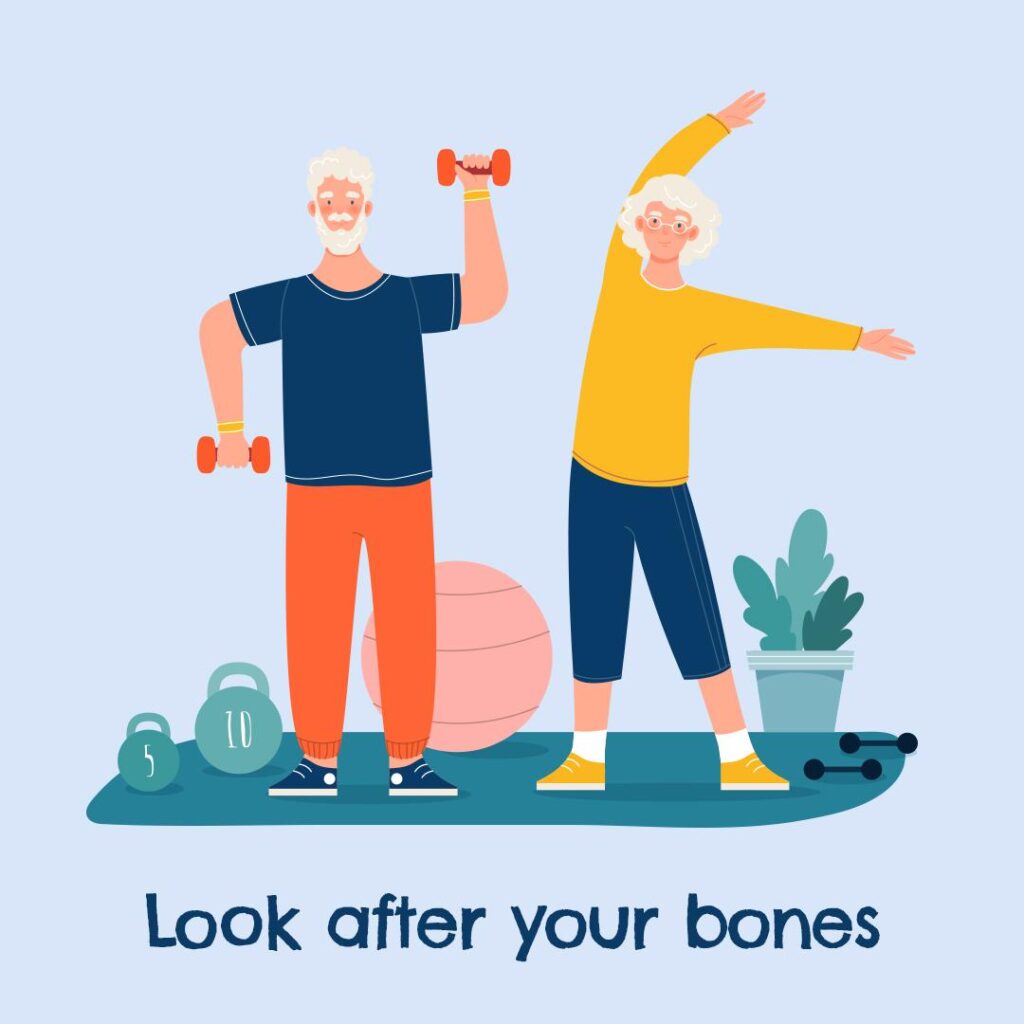
Osteoporosis is condition whereby one or more bones become more porous as the creation of new bone doesn’t keep up with the loss of old bone. When a bone becomes porous it is weaker, brittle and this increases the risk of fracture. These fractures can often happen from low impact or low trauma injuries, including coughing, tripping over or sometimes even bending over. In the over 50’s population in Australia, 66% of people have osteoporosis or osteopenia. Osteopenia is low bone density or thinning of the bones, unlike Osteoporosis there are usually no signs or symptoms of osteopenia.

What are the risk factors?
- Family history (Parents or siblings who have diagnosed Osteoporosis or have suffered a fracture from a seemingly minor fall)
- Low Calcium and/or Vitamin D
- Medical history (certain conditions can predispose to compromised bone health eg. Diabetes, Anorexia Nervosa, Thyroid Conditions, Rheumatoid Arthritis…)
- Lifestyle factors (Low physical activity, smoking, excessive alcohol)
What can you do about it?
It is advised to address vitamin D, calcium and exercise. Vitamin D and calcium deficiency can be diagnosed via a blood test, so best to see your doctor for assessment and management options.
Vitamin D levels
- Expose yourself to a healthy amount of sunlight
- This varies according to season, where you live and skin type
- Foods – egg yolks, liver, oily fish (however food alone is not enough to maintain a healthy level of vitamin D)
Calcium levels
- Food – bones store calcium, so if you don’t get enough calcium into your diet, the body will take it from your bones
- What to eat?
Dairy – milk, cheeses, yoghurts
Seafood
Some green vegetables – cucumber, kale, broccoli
Various nuts and seeds
Some fruits- orange, strawberries, kiwi fruit
Pork, chicken
Exercise- this is where physiotherapy comes in!
- Bones require exercise to stimulate the activity of its bone making cells. Exercise becomes increasingly important as we get older to prevent bone loss. The key is resistance-based exercise and/or weight bearing exercise. This means the exercise should be hard to do, and fatigue the body after a limited number of repetitions. High impact exercises such as stomping, jumping and skipping are often recommended. These type of exercises should be discussed with your therapist to make sure they are suitable for you.
- If it is known that you have low bone density in a certain body area, your exercises should target that specific area.
- Preventing falls is important for bone health to help prevent fractures. Exercises that target balance are an important part of any exercise program.
- Physiotherapists have excellent expertise to create a specific exercise program for you to manage your osteoporosis, osteopenia or reduce your risk of developing these conditions in the future. An individualised assessment and exercise program is very beneficial and all of our physiotherapists are well equipped in this area.
For more information on the content above, please check out the ‘Healthy Bones Australia’ website at www.healthybonesasutralia.org.au. For more information on your exercise program, talk to your physiotherapist.
